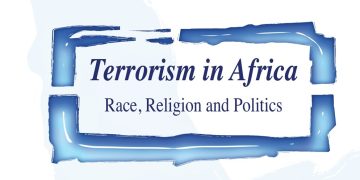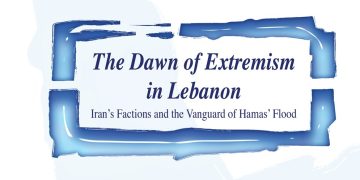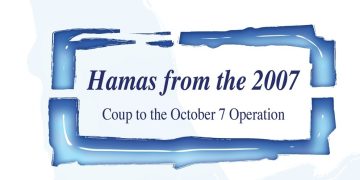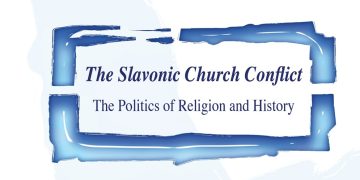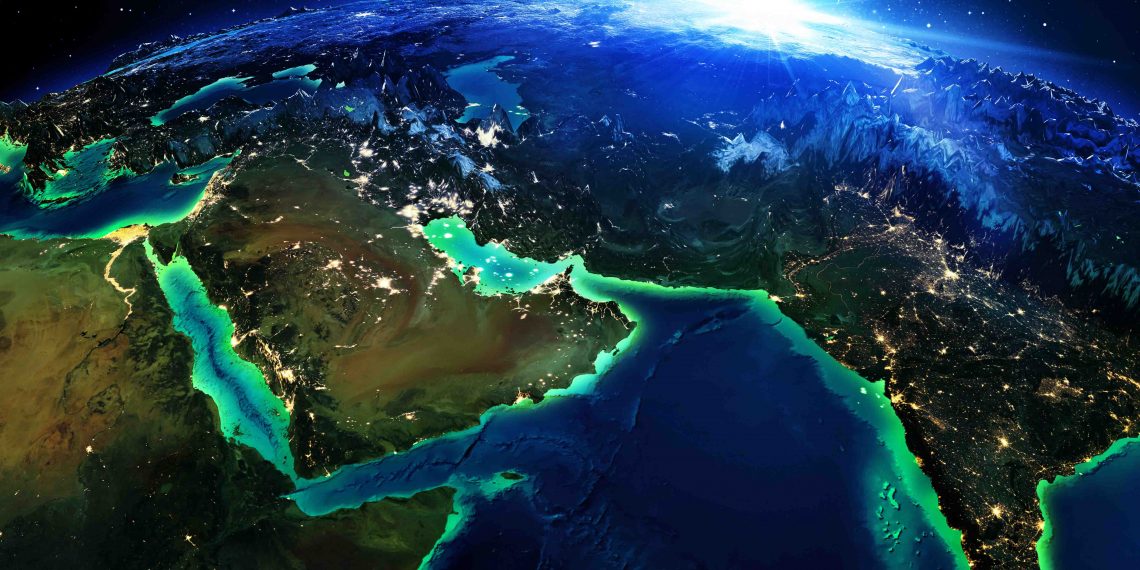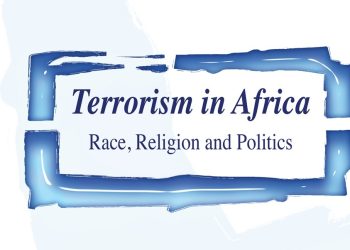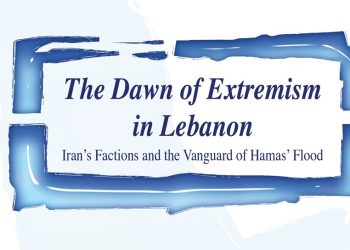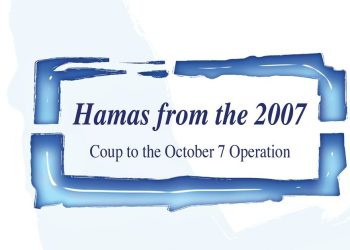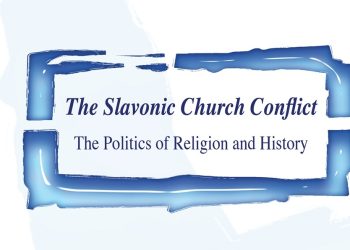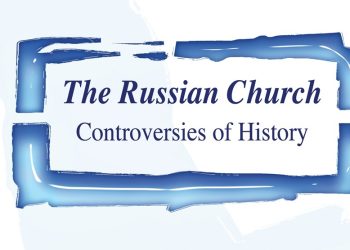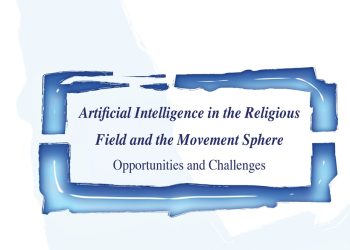By Diana Galeeva*
International organization: origins and member’s identities
The Gulf Cooperation Council (GCC) was founded in 1981 by Saudi Arabia, Bahrain, Kuwait, Qatar, Oman and the United Arab Emirates, all of which faced similar challenges and threats under the regional political circumstances and similar historical background. Being under the former British umbrella of armed and political suzerainty, the Gulf monarchies were keeping more independent from each other. Saudi Arabia was a fully independent state mainly focusing on domestic policies. Britain remained in actual control of all greater regional issues, so there was a necessity for the individual countries to take advantages of suggested cooperation. However, in the early 1960s the political events were changed in the Gulf: the accession of Kuwait to full independence in 1961 serving a message that Britain will finally abandon its total authority in that area. The British began to encourage the smaller sheikhdoms of the so-called Trucial States to think about larger cooperation between them. In the 1960s, the British revealed to the Gulf rulers their plan to totally withdraw from the Gulf. In 1971 the Dubai Agreement was signed, under that Qatar, Bahrain and seven Trucial Sheikhdoms of Abu Dhabi, Sharjah, Dubai, Ajman, Fujairah, Ras al Khaimah and Umm al Quwain that meant joining together in some kind of a federation or union. The next year, when Britain announced its withdrawal from its colonies and bases to the east of Suez, containing the Arabian Gulf, the nine sheiks and emirs signed the agreement to form the United Arab Emirates (UAE). However, only three years after the UAE came into being, Bahrain and Qatar decided to live as independent counties. Nonetheless, in the 1970s, all countries – with the former British-protected countries fully independent and with Oman having ended its era of isolation with succession of power of Sultan Qaboos – were interested in cooperation and the establishment of unity.
The unification of the Gulf was not achieved in one day; there was a long wait of five years for this establishment. In 1976, the foreign ministers of Kuwait, Qatar, Bahrain, the UAE, Saudi Arabia, Oman, Iran, and Iraq had a meeting in Muscat to consider Oman’s idea of coordinated regional security and defence policy creation. However, countries could not find consensus of all issues. In 1976, Sheikh Jaber al Ahmad al Sabah, the 3rd Emir of Kuwait, and at that period of time, a crown prince and prime minister, toured the Gulf states to consider joint action to ‘preserve the region’s security and stability in the face of political, economic and security challenges threatening this strategic area’. Thus, Sheikh Jaber officially suggested the creation of a Gulf union as a mechanism for this joint action, with the aims ‘of realizing cooperation in all economic, political, educational and informational fields’ (Christie, 1987: 8-9). Over the five following years, there were a number of meetings and discussions to form the GCC. Kuwait’s exploratory discourses with the UAE led to the creation of a joint ministerial council of the respective prime ministers of the two states. Moreover, the consultations with Saudi Arabia, Qatar, Bahrain and Oman, were equally successful and everybody formally authorized the concept of a Gulf union. However, the overthrow of the Shah of Iran in 1979 and the creation of the revolutionary regime of Ayatollah Ruhollah Khomeini completely changed the security of the Gulf. Some believe that Iran might fill the power vacuum and indeed this contributed to speeding up the process of the establishment of a Gulf union. Moreover, in December 1979 the USSR’s intervention in Afghanistan worsened relations between Iran and Iraq, and contributed to vulnerabilities of six monarchies and emergence of a Gulf union. In early February 1981, foreign ministers of six countries met in Riyadh and unanimously agreed on the creation of a Gulf Cooperation Council (GCC). After three months, the Charter was signed in Abu Dhabi and the GCC came into formal existence. Thus, the creation of the GCC was not only related to threat perception (Iranian revolution, Iran-Iraq war, Soviet invasion to Afghanistan), it took many discussions and time for the idea of cooperation for cultural, economic, social, political issues, to emerge.
In contrast to the establishment of the EU, the six founding members of the GCC share many similarities, constituting a unique ‘Gulf’ identity. While all other alliances of separate states must absorb different cultures, languages, and political systems, the GCC states share a common religion, Islam; a common language, Arabic; similar social structures; closely comparable standards of economic growth; close systems of government; a shared geography, and collective culture (Christie, 1987). For example, nationality affects access, residence, even who can marry whom (Dresch, 2005). There are four circles of identity in the Gulf: fellow citizen (muwatin), Gulf (khaliji), Arab, and foreign (ajnabi) (Kapiszewski 2001:179-80). Scholars argue that the threat to culture could be found in the numbers of immigrants in the Gulf (Khalaf 1992). Gulf unity remains essential for cooperation between states (Gause 1994: 87-8), as non-nationals have no role in any liberalization policies in the GCC. ‘They [non-nationals] cannot vote, and their voices are nearly invisible in the liberalized political space created in the past few years’ (Teitelbaum, 2009: 18).
Economic integration
The GDP of the GCC in 2013 was $1.62 trillion comprising – $921 billion in gross exports and $514 billion in gross imports. The GCC economy was rated the fifth strongest in the world, which indicates the power of the GCC in the global economic arena and its potential attraction to investors. The GCC’s economic integration project started in 1981, when the GCC leaders signed an agreement on economic unity in Riyadh. Among the many ideas covered were the cross-border movement of citizens, adaptable capital flows, and collaboration around issues of trade, technology, transport, development, and fiscal and financial cooperation. In December 2001, the GCC rulers ratified an updated version of the agreement. The updated agreement included information about facilitating the creation of the GCC customs union, in keeping with nationwide and worldwide economic trends, a joint GCC market, and the yet-to-be-instituted common currency. By the end of 2008, the GCC states had created a custom union with streamlined measures, customs standards and legislation. The same year, the members decided to establish a joint market. This required the removal of restrictions on the movement of individuals and capital. This also meant that all GCC citizens would be permitted to own property and do business in any of the six states, and would be treated as natural-born citizens. By 2005, the GCC agreed to create a fiscal council that would later become a GCC central bank. In 2001, the states agreed to peg their currencies to the US dollar, however, after discussion in 2005, 2007, and 2010, the launch of a shared currency was postponed (Abdulqaber, 2015).
With all these achievements, the process of economic integration is slow, due to the poor private sector contribution to the GDP, the lack of a sophisticated transport network, political disputes, and some states’ incapability to meet economic integration standards. For example, Hanieh (2011: 145) suggests the idea of Khaleeji (literally translated as ‘Gulf’) Capital, which means a common pan-Gulf Arab identity that sets citizens of the region apart from the other parts of the Middle East. Khaleeji Capital does not mean the loss of ‘national identity’, but in contrast a perspective towards growth at the pan-GCC scale. The key of Khaleeji Capital is structured around a Saudi-Emirati axis, along with other GCC conglomerates becoming ‘subordinate partners within interlocking hierarchical structures’ (Hanieth, 2011:2). In other words, the economic integration (creation of custom union, joint GCC market) becomes an important but not crucial factor in the strength of the GCC cooperation (as liberalism suggests). The main vital element of cooperation could be understood as national identity.
Non-democracy
The Kantian triangle suggests that one of the vital elements for peaceful cooperation among members is democracy. Christie (1987:13) believes that ‘Common language, religion and culture may be the bricks of the GCC edifice; the coincidence of matching government rule is the cement that binds them together’. Thus, the strength of the GCC is in their political systems. Within academic literature there is a debate over the conceptualization of their governance. The six members of the GCC are among the world’s last true monarchies (Peterson, 2009). While one academic suggests that Gulf societies are viewed as the most conservative ones worldwide, and the rulers of the Gulf are referred to by Western media as ‘autocratic’, others believe the political systems are neither autocracy nor democracy, instead characterizing Kuwait’s regime as an ethnocracy (Longva, 2009). Moreover, Kedourie (2009:1) suggests that Arab political tradition holds nothing ‘which might make familiar, or indeed intelligible, the organization ideas of constitutional and representative government’ adding that ‘those who say that democracy is the only remedy for the Arab world disregard a long experience which clearly shows that democracy has been tried in many countries and uniformly failed’. Teitelbaum (2009: 5) in Political Liberalization of the Persian Gulf (2009) clarifies that the book concentrates on political liberalization and not democratization, ‘since democracy, probably most succinctly defined as the freely and regularly practiced replacing of leaders by universal suffrage, does not exist in the Gulf, nor is it expected to in the foreseeable future’. Due to the fact that in the literature there is no clear understanding of the Gulf regime, I will describe it as a ‘non-democracy’.
While the European Union depended on democracy as a key element of strong, peaceful cooperation, the GCC’s successful development since 1981 demonstrates the opposite – being the world’s last monarchies (non-democracies) makes them even stronger because they depend on each other. The GCC’s cooperation has not been perfect over the last thirty-six years since, as will be discussed, there have been some crises between them, however, the non-democratic GCC states have had no conflicts between each other. It is arguable then that they have been living peacefully, and have solved their misunderstandings by diplomatic means.
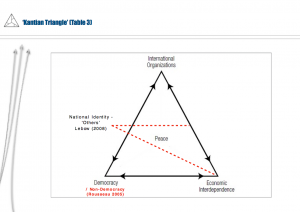
Oman: Remain or Leave?
The outcome of the Brexit vote raised a lot of concerns, not solely within the European Union, but within GCC member societies. One of the earliest responses to Brexit came from an official statement by Oman, a representative of the Gulf Cooperation Council, which described Brexit as ‘a courageous historical decision’ (Ministry of Foreign Affairs of Oman, 2016). Despite the UAE and Bahrain’s comments about these issues, Oman’s comment led to a discussion about the withdrawal of the country from the GCC. Indeed, Oman is known for its unique and independent foreign policy (Baabood, 2005). Concerns were previously raised about the future of Oman within the organization in 2013, when Oman refused to join the GCC Union. In 2011, Oman also did not agree with the Saudi proposal for the development of a unified GCC (Al –Rashhed, 2013). One of the explanations for why Oman implements such unique foreign policy is also related to Oman’s society, political culture and economy (Baabood, 2017). Since the early 1970s, when Sultan Qaboos came to power, Oman’s foreign policy started to emerge in this manner towards other Gulf states. Omani society has mostly been influenced by Ibadism, a sect of Islam that is neither Shia nor Sunni. The population is heterogeneous, containing an ethnic and religious combination attributable mainly to the history of tribal migrations, maritime trade and relations with the rest of the world: Arabs, Baluchis, Zanzibaris, Indians (Hindus, Liwatiyath), Bayasira, Zatutis, Baharna, Ajam, Sonora, Shihuh (Peterson, 1978; Riphenburg, 1998). Qaboos was able to replace the competition between tribalism and clannism (asabiyaat) by establishing himself as a single ruler. Thus, ‘all the old trends of identifying the Omani people were abolished and replaced by the reinvention of the Omani identity, leading to a process of national unification that evolved around the person of the Sultan’ (Babood, 2017:112). Two main foundations built Sultan Qaboos’ policy: the Sultan’s capability to resolve matters linked to the country boundaries, and Omani identity. Moreover, Qaboos was able to use oil income to consolidate his power through a redistribution system, as all GCC states do. The idea of national identity (because the ethnic, cultural and historical development of the country helped to establish ‘Omani identity’) that affected the implementation of the independent foreign policy in the Omani case, and increased populist ideas in the European case, put the future of the international organizations into question. However, while in the Brexit case, national identity and its reflection of the issue of immigration suggest the negative interpretation of ‘others’ (Hegel, 1999; Kant, 1991; and Schmitt, 1976), in the GCC case, even independent foreign policy and the creation of different identities (‘Omani identity’) is understood through Lebow’s (2008) explanation of ‘others’ in a positive sense.
Observers believe that integration between the GCC states will continue in the future. Alothaimin points to Oman’s strong integration within the GCC to suggest that it is very difficult to imagine Oman’s withdrawal after more than 35 years. Oman is involved with about 46 ministerial committees, 350 working committees and 700 meetings annually (two meetings a day) with the participation of 13 thousands GCC officials from various sectors. With so much intertwining between Oman and the rest of the GCC, Alothaimin is confident that this relationship will ‘remain solid’ (Interview, 2017). Alsulami also emphasised the strong cooperation within the GCC states, stating that Oman is one of the main founders of the GCC, and it was also the state which proposed the establishment of a united army (Peninsula Shield Force) for the GCC. Moreover, Oman has received financial aid from Saudi Arabia, Qatar, UAE and Kuwait. Nonetheless, Alsulami mentioned that for historical and sometimes cultural reasons, Oman also looks at itself differently from the other member countries of the GCC. Pointing out security, financial and historical reasons, Alsulami suggests that it would be very difficult for Oman to withdraw from the GCC (Interview, 2017). Alsulami described the future of the GCC as ‘stronger than many people think’. Similarly, Alothaimin suggests that due to ‘the challenges that surround the region and the world, a stronger union among the six states has become a necessity rather than a choice and member states realize this and work for it’.
The motivation behind Oman’s official statement was related to the strong and historical relationship between Oman and the UK. Alsulami said that it should be viewed as ‘a supportive step to the UK rather than applying to Omani domestic issues’. Alothaimin also suggests that Oman’s statement was designed to ‘appear supportive of the “will of the people” in the UK’, referring to their role as a ‘close ally of London’. Indeed, before the First World War, Britain, Russia, France and Germany competed to dominate Oman and the south-eastern shore of the Gulf. When oil was discovered in southern Iran in 1908, it became the key for Britain’s policies in the Gulf (El-Solh, 2000). Along with European imperial competitions, Oman was the key to the security of the maritime approaches to Britain‘s territories in India. Britain was able to influence the region using force, threats or diplomatic initiatives (El-Solh, 2000). For example, in 1869 when the British leadership felt the Ottoman Government was encouraging rebellion in Dhofar against the Sultan of Masqat, the British rulers warned that no ‘foreign interference in Dhofar would be tolerated’ (FO 54/27, Simla to Bushire, 1896). For providing protection, Britain concluded a number of agreements with the Sultan of Masqat and with tribal leaders, the British authorities concluded an agreement with the Sultan of Masqat and Oman became independent in 1793 five years after the Sultanate (Cain and Hopkins 1993:418). Thus, treaties entitled Britain to have ‘a preponderating influence’ in Masqat, without affecting, in principle, the independence of the Sultanate and its foreign policy (FO 54/36, 1905: 96-8). Omani and UK historical ties are so long and strong, that Oman’s message mainly was related to the support of the Britain’s decision, rather than demonstration of the possibilities of its own withdrawal from the GCC.
How national identities will help to recover deteriorating relations between the GCC?
Qatar as a case study
When Sheikh Hamad bin Khalifa Al Thani came to power in Qatar in 1995, he created a new foreign policy by building political ties with the US and regional powers such as Iran, and built relations with Israel. Qatar even attempted to influence the region for a short period, which became possible by building alliances with Islamist groups (Muslim Brotherhood, Hamas, Hezbollah, Libyan Fighting Group, Houthis) and by establishing its media (Al Jazeera, Arab 21, Middle East Eye). Qatar’s key means was its wealth. Qatar’s relations with Islamists became the core of crises between its ‘brother’ GCC states, especially Saudi Arabia, the UAE and Bahrain, in 2013/2014, and currently in 2017. On the 5th of March 2014, Saudi Arabia, the UAE, and Bahrain withdrew their ambassadors from Doha. This marked the start of a period of unprecedented political tension between the GCC states. At that time, Qatar disagreed with the classification of the MB as a terrorist organization, but rather continued to give them, ‘quiet and generous support’ (The Economist, 2014:1). The rift was resolved with Qatari concessions. Observers believe that the similar national identities helped to overcome the crisis in GCC relations. Alsulami (Interview, 2017) suggests that the similar identities of the GCC states helped Qatar to recover its deteriorating diplomatic relations with the rest of the organisation; and this factor will help to quickly overcome any dispute or disagreement among the GCC.
The second current crisis started in May 2017 when, several days after the US-Arab-Islamic Summit, the official Qatar News Agency ran a report quoting positive comments by the current Emir – Sheikh Tamim about Iran and Hamas (Al Arabiya, 2017). Qatar stated that the Qatar News Agency was hacked. On 5th June, Saudi Arabia, the UAE, Yemen, Egypt, the Maldives, and Bahrain cut ties with Qatar, stating that its foreign policies had been undermining stability and security in the region by supporting various terrorist and sectarian groups (such as the Muslim Brotherhood, ISIS, al-Qaeda). On 22nd June, thirteen demands were issued by four Arab countries – the UAE, Saudi Arabia, Bahrain and Egypt – to end the crisis (consisting of cutting relations with Muslim Brotherhood, and other Islamists; shutting down the Al Jazeera news network; downgrading relations with Iran; and closing a Turkish military base). These demands were rejected by Qatar. On 19th July six broad principles for Qatar were suggested by the Arab quartet, to restart the negotiation process (The National, 2017). However, the crisis is still continuing and this dispute has brought uncertainty in the region and globally.
The current discourses focus on the future of the GCC crisis, and the institution itself, dominated by the question of whether Qatar will withdraw from or stay within the GCC. If Qatar withdraws from the GCC, it would probably continue to develop relations with Turkey and Iran, but in this case, Qatar risks becoming dependent on two regional players which are trying to expand their dominance in the region. It should be acknowledged that relations between Qatar, Iran and Turkey are successful mainly because of Qatar’s financial resources, rather than the GCC’s shared cultural and historical heritage. There are two points to consider here: Iran needs Qatar for power projection – to support Iranian shields – Shia militias in the region (such as Hezbollah in Lebanon, the Houthis in Yemen, and the so-called Bahraini Hezbollah), and Iran’s interest in having closer relations with Qatar is related to disturbing Saudi and UAE dominance in the region, and generating conflict between them and Qatar. Turkey is interested in Qatari investment and in strengthening the Muslim Brotherhood presence in the region together with Qatar. For a Turkish presence and security umbrella, Qatar would ‘pay’ with investments. However, as transformative changes in the LNG market approach (Wright, 2017), along with isolation from the GCC (as land and air routes are closed off), the required investments into Qatar itself, investments in Turkey, and further support for Islamists (Muslim Brotherhood, Iranian militias), could put even Qatar in a difficult financial situation in the future. Without Qatar’s primary strength, its wealth, its union with Iran and Turkey would be undermined. In this case, equal partnership would come to an end and Qatar would be viewed as a dependent, weak and secondary state.
The future of the GCC as a whole depends on Qatar, and some argue that Oman could be the second state to withdraw from the GCC, as it implements an independent foreign policy. However, a shared or similar national identity will be one of the key factors in the normalization of the relations between the GCC states, even at such critical moments of cooperation. In other words, if Qatar stays with the GCC, the crisis between Oman and the rest of the GCC will not occur. Thus, the stronger the national identity between members of international organisations, the stronger their union is.
Conclusion
Detailed analysis of the GCC as an international organization demonstrates the essential importance of similarities between national identities among member-states. The Qatar case study demonstrates that even for very critical relationships between the GCC states, national identity served, and will continue to serve, a key role in normalizing relations, and in unification. Due to the culturally varied development of Oman’s identity, ‘others’ can be characterized in a positive way, as suggested by Lebow (2008). As a result, the GCC case study proves the presented ‘Kantian Triangle’ (Table 2) with the additional element of national identity (Lebow, 2008). Moreover, the development of the GCC contradicts Kant’s suggestion that the future of peace can happen only between democratic states, which are key for liberalization. As Rousseau suggested (2005) a union of non-democratic states could be successful as well. Indeed, the non-democratic GCC states have been living peacefully in cooperation for thirty-six years. This uniqueness put them in a position of dependence as the success of one relied on the success of others. Having analysed the current development of Europe, in particular the aftermath of Brexit and the collaboration of the GCC, I propose that the Kantian triangle be redesigned in a quadrilateral configuration:
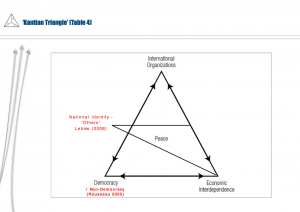
*Diana Galeeva is a PhD candidate at Durham University in the UK.
This material was originally presented at the Eighth Gulf Research Meeting (GRM), 1-4 August 2017, which was organised by the Gulf Research Centre at the University of Cambridge.


